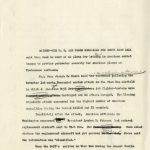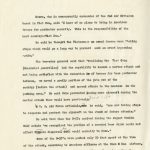1964, “Perimeter Security”
deepe
airforce–1
SAIGON–THE U. S. AIR FORCE COMMANDER FOR SOUTH EAST ASIA said this week he knew of no plans for bringing in American combat troops to provide perimeter security for American planes on Vietnamese airbases.
Maj. Gen. Joseph H. Moore made the statement in an exclusive interview following the November 1st morta Communist mortar attack on the Bien Hoa airfield in which 4 American B-57 Jet jet-fighters jet fighter-bomber were damaged and 14 others destroyed and 14 others damaged. The blazing 20-minute attack accounted for the highest number of American casualties during the war–4 killed and 72 wounded.
Immediately after the attack, American officials in Washington announced (More) President Lyndon B. Johnson had ordered replacement aircraft sent to Viet Nam. But Moore said Monday when asked whether the replacement aircraft had yet arrived in Viet NamHere, Moore said the information was “classified.”
When the B-57’s arrived in Viet Nam during the August Tonkin Gulf crisis, the news was announced and correspondents were allowed to take photographs of theF102 Jet fighters which arrived in Saigon.
(More)
deepe
airforce–2
Moore, who is concurrently commander of the 2nd Air Division based in Viet Nam, said “I know of no plans to bring in American troops for perimeter security. This is the responsibility of the host country–Viet Nam.”
He said he thought the Vietnamese as armed forces were “taking steps which would go a long way to prevent such an event happening again.”
The two-star general said that “realizing the Viet Cong (Communist guerrillas) had the capability to launch a mortar attack and not being satisfied with the reduction in of troops for base perimeter defense, we moved a goodly portion of the jets out of the country (before the attack) and spread others to the maximum in the parking area.” He said this prevented losing more aircraft during the mortar attack that would have previouslybeen lost.
Z U. S. Air Force officials,are he said, “are now taking steps to disperse and protect the aircraft in the event of future attacks.”
He said that when the B-57s arrived during the August Tonkin Gulf crisis “we recognized the problem of a crowded base which could not effect dispera dispersal likeAs would normally be done.”
Some of the B-57’s were parked only 20 feet apart at the time of the attack, according to American officers at the Bien B Hoa airbase, and there had been little attempt to provide sandbagged revetements around each aircraft as is the normally done.
deepe
airforce–3
Moore said the base defense was “beefed up considerably” after the arrival of the aircraft and “extra precaution son interior guards were taken becuaause in the past we had only attempted sabotage.” He also said that extra army troops were placed under the Vietnamese army control for guarding the perimeter outside the base, but these troops were moved out on operations after the dangers of retaliation by Hanoi diminished following the August 5th American bombing of North Viet Nam.
He said that American airforce servicement are “technicians” and “not combat troops” but they are formed into defense teams to provide on- ba se on-base protection for American living quarters, facilities and a i aircraft, while Vietnamese airforce teams provide on-base security for their own living and operational areas.
Asked whether Americans living on base were “sitting ducks” if adequate protection defenses were not established outside the bases airbases, he replied “careful preparations arexhaing made to prevent Americans from being exposed more than necessary.” He said, however, there was “no guarantee” the Vietnamese army would take strong measures for defense outside the base, but he believed “the Vietnamese are just as anxious as we are this does not recur again.”
-30-
Read Previous Article: 1964, “Three Possible Futures”



